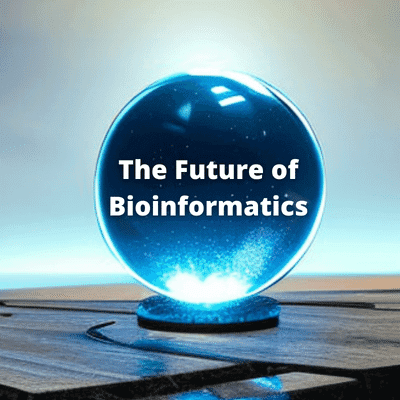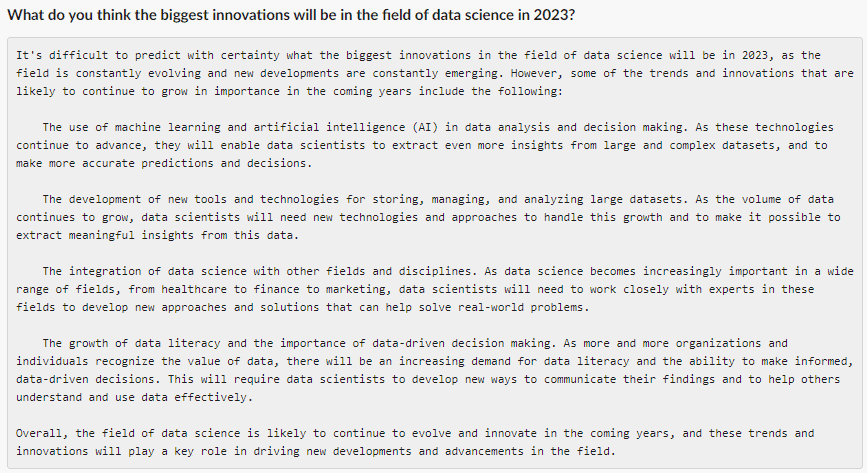The Future of Bioinformatics in 2023
- 31st January 2023
- Posted by: Breige McBride
- Categories: Bioinformatics, News, Sequencing, Single Cell Analysis

Want to know what the future of bioinformatics holds? Here we discuss the new trends in bioinformatics to expect in 2023! We surveyed our large team of expert bioinformaticians to find out what their bioinformatics predictions are for the next 12 months. Here is what they have to say:
(Just so you know, our Bioinformatics 2024: Predictions & Challenges is now available!)
Bioinformatics 2023 – Key Predictions
Single-Cell Sequencing Will Continue to Grow in Popularity
One of the key predictions in our Bioinformatics 2022 Predictions blog was that the use of single-cell sequencing technologies would increase. Here at Fios Genomics, that was certainly the case. In fact, single-cell analyses were some of our most popular analyses last year, as you can see in our in Bioinformatics Trends 2022 blog. This year, our bioinformaticians predict single-cell sequencing technologies will become even more popular.
In particular, our team predict an increase in analyses of existing single-cell data which is accessible from public databases and repositories. Some Fios bioinformaticians are especially interested in how single-cell RNA (scRNA) sequencing technology is continuing to develop and remarked that it is already enhancing our understanding of gene expression at an unprecedented level of granularity. Since this is the case, we are predicting that 2023 will see the creation of new methods to reveal insights from scRNA data, especially data generated from tissues in a 3D or structural sense.
The Future of Bioinformatics Will Include Single-Molecule Protein Sequencing Analysis
Keeping with the theme of understanding things on a granular level, single-molecule protein sequencing analysis is a possible new trend to watch out for in bioinformatics in 2023. A few single-molecule protein sequencing techniques have been developed in the last few years and 2023 may well be the year they really take off. Two particular technologies to look out for are fluorosequencing1 and single-molecule protein sequencing on semiconductor devices2. If you wish to learn more about single-molecule protein sequencing, we recommend this Nature article as a starting point.
Bioinformatics Latest Research Topics
In 2023, our bioinformaticians predict we will see a lot more research in spatial transcriptomics and immunotherapies for cancer.
Spatial Transcriptomics
Our team are increasingly participating in spatial transcriptomics discussions with clients, putting this profiling method firmly on their radar. Presently, public spatial transcriptomics data sets are few and far between. However, our bioinformaticians predict that this will change in 2023. They expect more companies and institutions will invest in spatial genomics data generation technologies this year. In turn, this will lead to an increase in publicly available spatial transcriptomics data sets over the next 12 months.
As spatial profiling becomes more popular, some of our bioinformaticians suggest we will see more methods being developed in this area. One suggestion was that more high throughput methods will be developed for spatial profiling in proteomics in particular.
Immunotherapy for Cancer
Immunotherapy for cancer is a fast growing research area, and new developments are announced regularly. For example, in January 2023 alone, a personalised cancer immunotherapy has been granted an FDA fast-track designation. Also, research has revealed that immunotherapy prior to surgery can be remarkably effective for colorectal cancer patients. More developments like these will lead to more research, which in turn will result in more data requiring bioinformatic analysis.
The Future of Bioinformatics – 2023 and Beyond
Data, Data, and More Data
Every day, the volume of biological data available to researchers increases and individual biological data sets continue to grow in size. This increasing data volume is causing issues with data storage, transfer, and processing. For instance, as researchers look at samples and tissues in higher resolution, using, for example, single-cell methods, the amount of data generated from an experiment increases massively; and sequencing methods are increasingly being used in place of lower volume alternatives. In order to resolve these issues, in 2023 it is likely we will witness the development of new tools and technologies to help manage, store, and analyse large volumes of data. As a team that analyses large data sets daily, Fios Genomics bioinformaticians will be quick to recognise and adapt such technologies.
The Rise of ChatGPT
ChatGPT from OpenAI is an artificial intelligence-based chatbot that can respond to prompts and questions in a conversational manner. Its applications vary from answering customer service enquiries to writing stand-up comedy routines. But, what does it mean for bioinformatics?
There are a few ways in which our bioinformatics team expect ChatGPT will impact bioinformatics. Although far from a perfect solution (so far), the chatbot can be used to write and debug code. Since coding is one of the foundational pillars of bioinformatics, it is likely that many bioinformaticians will try out ChatGPT at some point, at least to satisfy their curiosity, if nothing else.
To satisfy our curiosity at Fios Genomics, we asked ChatGPT what innovations in data science we should expect in 2023. Here is what the chatbot had to say:

Not bad for a robot.
Overall, we expect a lot of buzz around the use of ChatGPT in bioinformatics in 2023. However, whether that buzz will die down as the novelty wears off, or whether ChatGPT will become an accepted and integral part of a bioinformatician’s toolkit, remains to be seen.
The Future of Bioinformatics – Key Challenges
Data Volume
To put it simply, the biggest challenge our team envisions in bioinformatics in 2023, is data volume. We have already mentioned the issues this will cause in data management in terms of storage, transfer, and processing. In addition, data integration will be a key challenge. Take omics data, for example, where it is possible to generate many different types of data from the same samples from a single study. However, in bioinformatics, there is not yet a standardised approach to integrated analysis for those data types.
Data Access
Another key challenge is data access. For example, although we expect spatial transcriptomics to be one of the key research topics this year, as yet available spatial transcriptomics datasets are lacking. This does not help scientists familiarise themselves with this data type and the value it can add to their research.
Also, although there are vast amounts of biological datasets generated in the healthcare industry as a whole, much of these are retained by IP by the data generators and are therefore inaccessible.
Our Hopes for the Future of Bioinformatics
In addition to predicting what will happen in bioinformatics in 2023, we asked our bioinformaticians what they would like to happen. We have listed the most common answers below. Hopefully, we will see some advances in each of these areas this year!
- The creation of more machine learning-based discovery methods
- More use of genome-wide association studies (GWAS) to understand diseases, leading to more therapies for patients
- Wider adoption of high-resolution sequencing methods
Thank you for taking the time to read our bioinformatics predictions for 2023! Also, we would like to thank our Fios Genomics bioinformaticians for sharing their insights and making this blog possible.
If you would like to discuss bioinformatics with the Fios team in more detail, contact us today! We are always happy to advise how bioinformatics approaches can advance pre-clinical, clinical, environmental, and agricultural research.
Request one of our demo reports
At Fios Genomics, we avoid providing clients with lists or more data. Instead, our analysis solutions provide relevant, reliable and actionable information. Our conclusions are data-driven and led by biology rather than statistics, as you can see in our data analysis report examples.
Fill the form below to receive a demo today.
Sources
1 Swaminathan, J.et al. Nature Biotechnol. 36, 1076-1082 (2018)
2 Reed, B.D. et al. Science 378, 186-192 (2022)
Author: Breige McBride, Content and Social Media Manager, Fios Genomics
Reviewed by Fios Genomics Bioinformatics Experts to ensure accuracy
See also:
Bioinformatics 2024: Predictions & Challenges
Bioinformatics Applications in Biotechnology
Drug Repurposing: What are the Benefits?
Leave a Reply
You must be logged in to post a comment.

